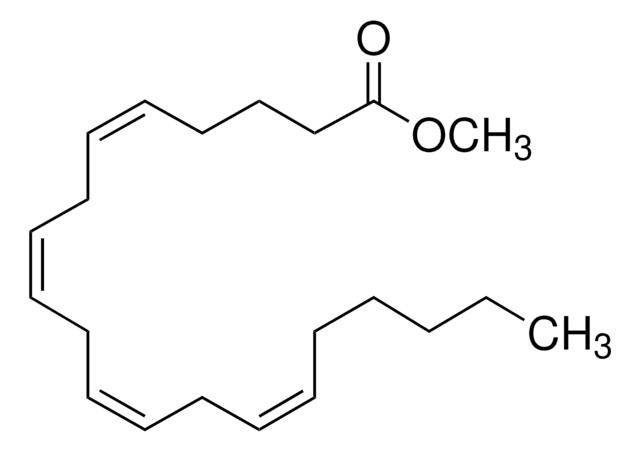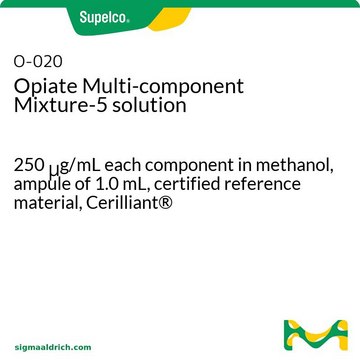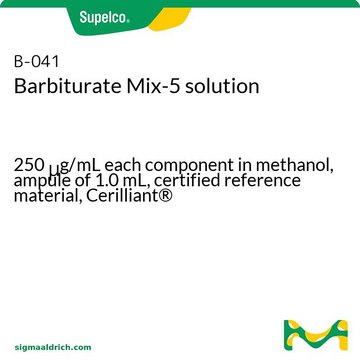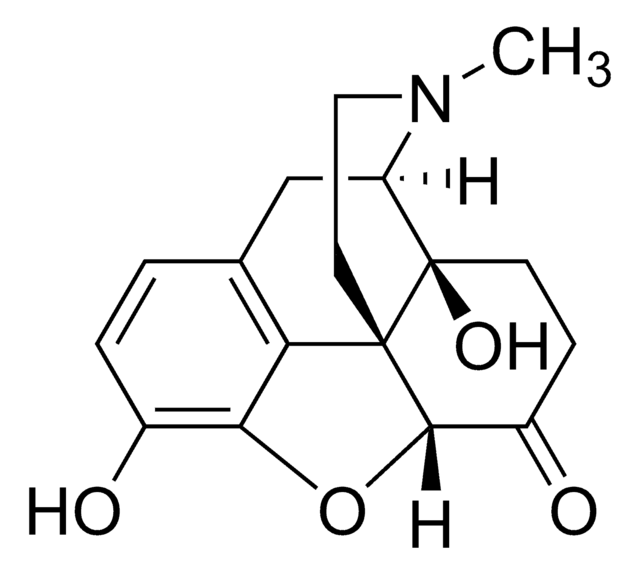43799
N-Palmitoyl-D-sphingosine
≥98.0% (TLC)
Synonym(s):
Cer(d18:1/16:0), (2S,3R,4E)-2-(Palmitoylamino)-4-octadecene-1,3-diol, N-Hexadecanoyl-D-sphingosine, N-Palmitoyl-D-erythro-sphingosine, N-[(1S,2R,3E)-2-Hydroxy-1-(hydroxymethyl)-3-heptadecen-1-yl]hexadecanamide, C16 Ceramide (d18:1/16:0), C16-Ceramide
About This Item
Recommended Products
Quality Level
Assay
≥98.0% (TLC)
form
powder or solid
composition
carbon content, 75.92%
hydrogen content, 12.55%
nitrogen content, 2.60%
functional group
amide
lipid type
sphingolipids
shipped in
wet ice
storage temp.
−20°C
SMILES string
OC[C@]([H])(NC(CCCCCCCCCCCCCCC)=O)[C@]([H])(O)/C=C/CCCCCCCCCCCCC
InChI
1S/C34H67NO3/c1-3-5-7-9-11-13-15-17-19-21-23-25-27-29-33(37)32(31-36)35-34(38)30-28-26-24-22-20-18-16-14-12-10-8-6-4-2/h27,29,32-33,36-37H,3-26,28,30-31H2,1-2H3,(H,35,38)/b29-27+/t32-,33+/m0/s1
1 of 4
This Item | P-071 | B-041 | O-004 |
|---|---|---|---|
| format multi-component solution | format multi-component solution | format multi-component solution | format single component solution |
| form liquid | form liquid | form liquid | form liquid |
| Quality Level 300 | Quality Level 300 | Quality Level 300 | Quality Level 300 |
| grade certified reference material | grade certified reference material | grade certified reference material | grade certified reference material |
| storage temp. −20°C | storage temp. −20°C | storage temp. −20°C | storage temp. 2-8°C |
Packaging
Storage Class Code
11 - Combustible Solids
WGK
WGK 3
Flash Point(F)
Not applicable
Flash Point(C)
Not applicable
Certificates of Analysis (COA)
Search for Certificates of Analysis (COA) by entering the products Lot/Batch Number. Lot and Batch Numbers can be found on a product’s label following the words ‘Lot’ or ‘Batch’.
Need A Sample COA?
This is a sample Certificate of Analysis (COA) and may not represent a recently manufactured lot of this specific product.
Already Own This Product?
Find documentation for the products that you have recently purchased in the Document Library.
Customers Also Viewed
Our team of scientists has experience in all areas of research including Life Science, Material Science, Chemical Synthesis, Chromatography, Analytical and many others.
Contact Technical Service














